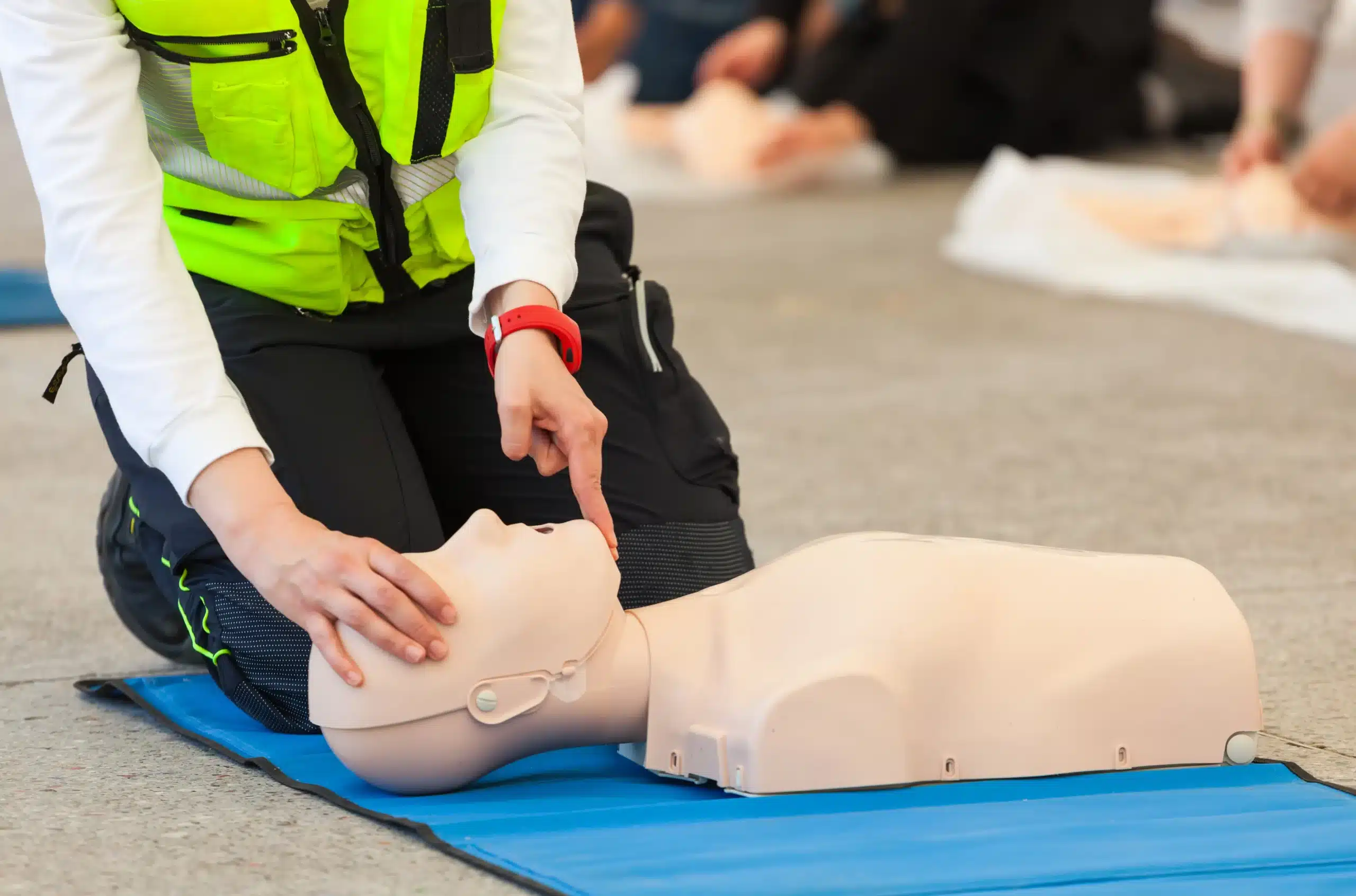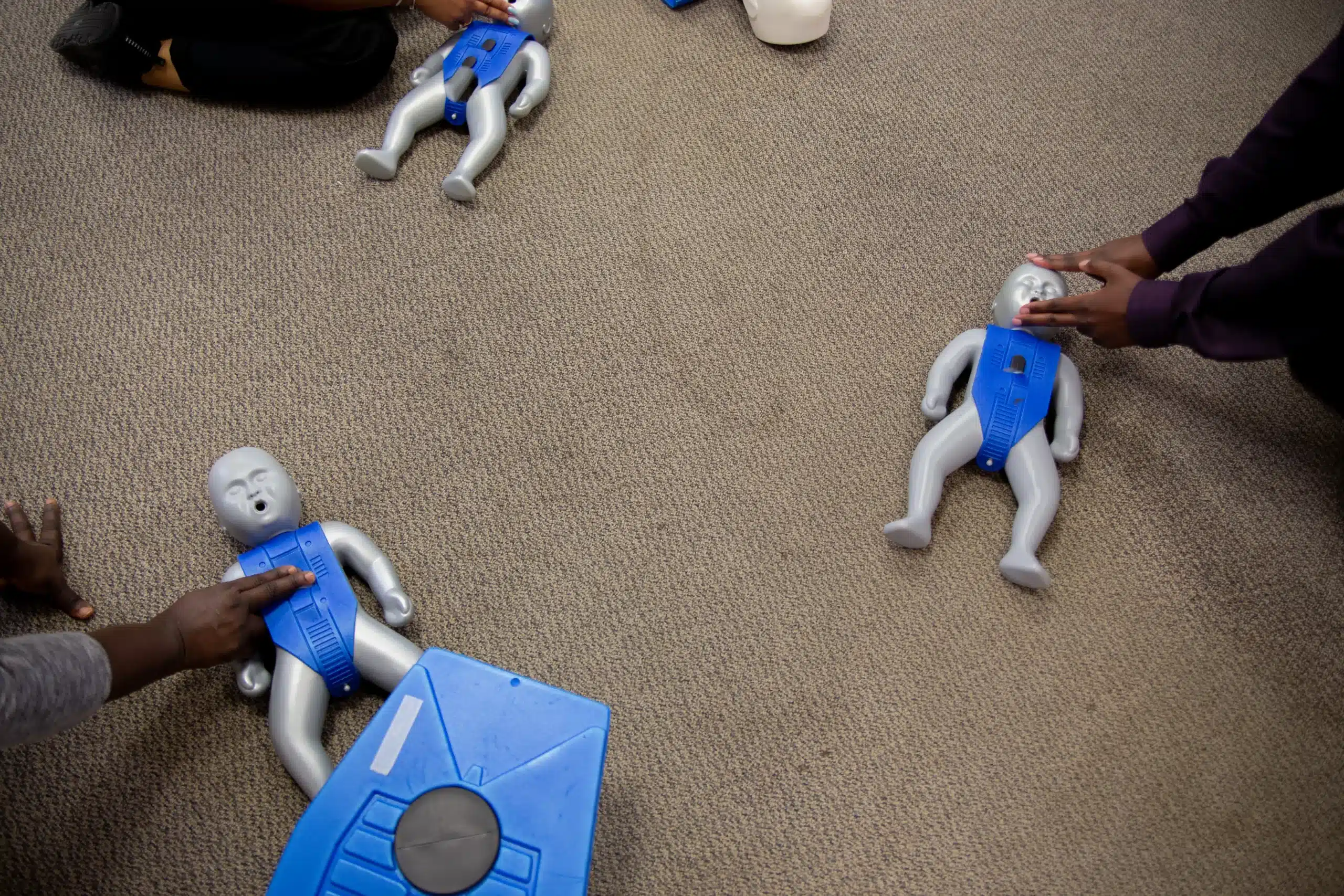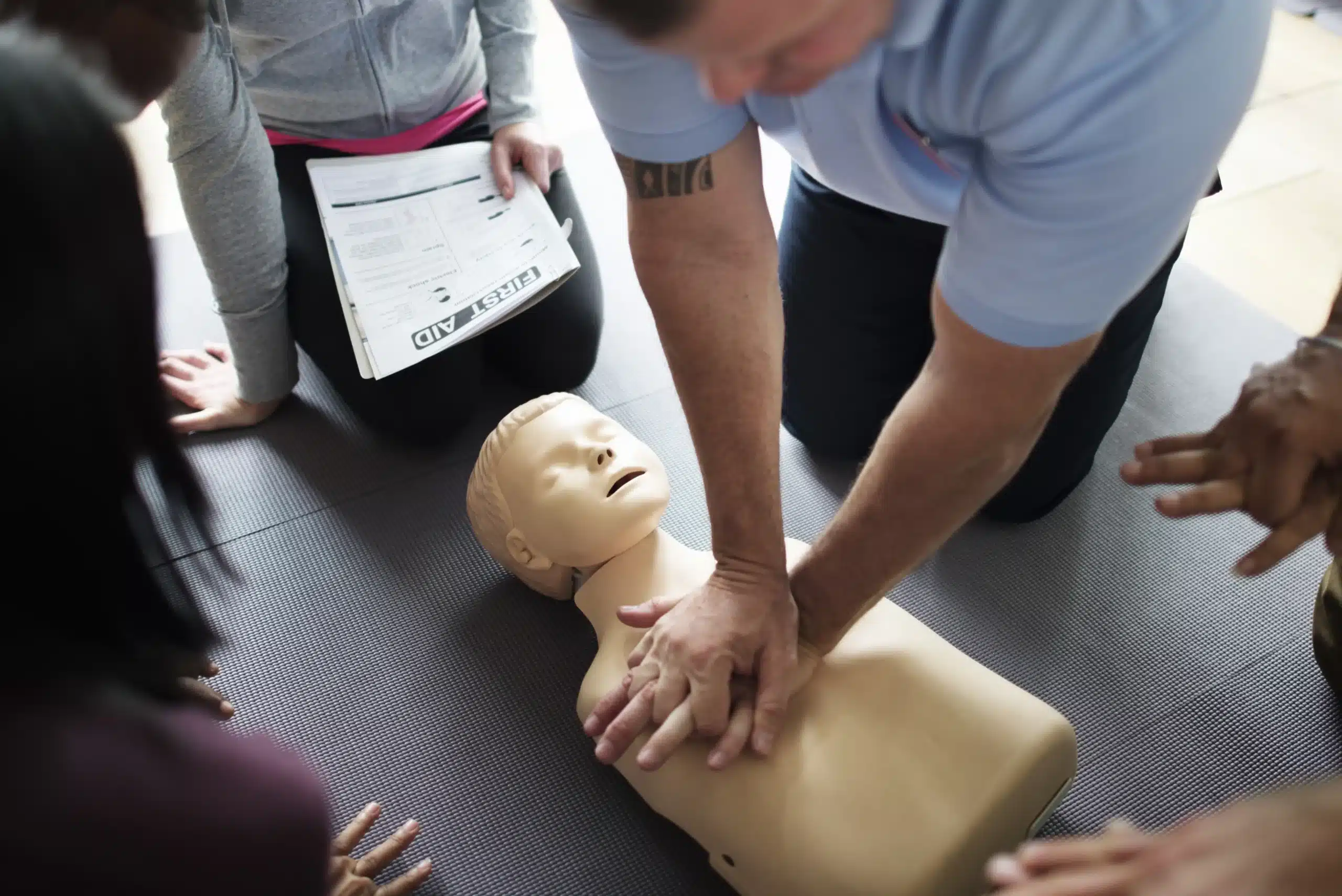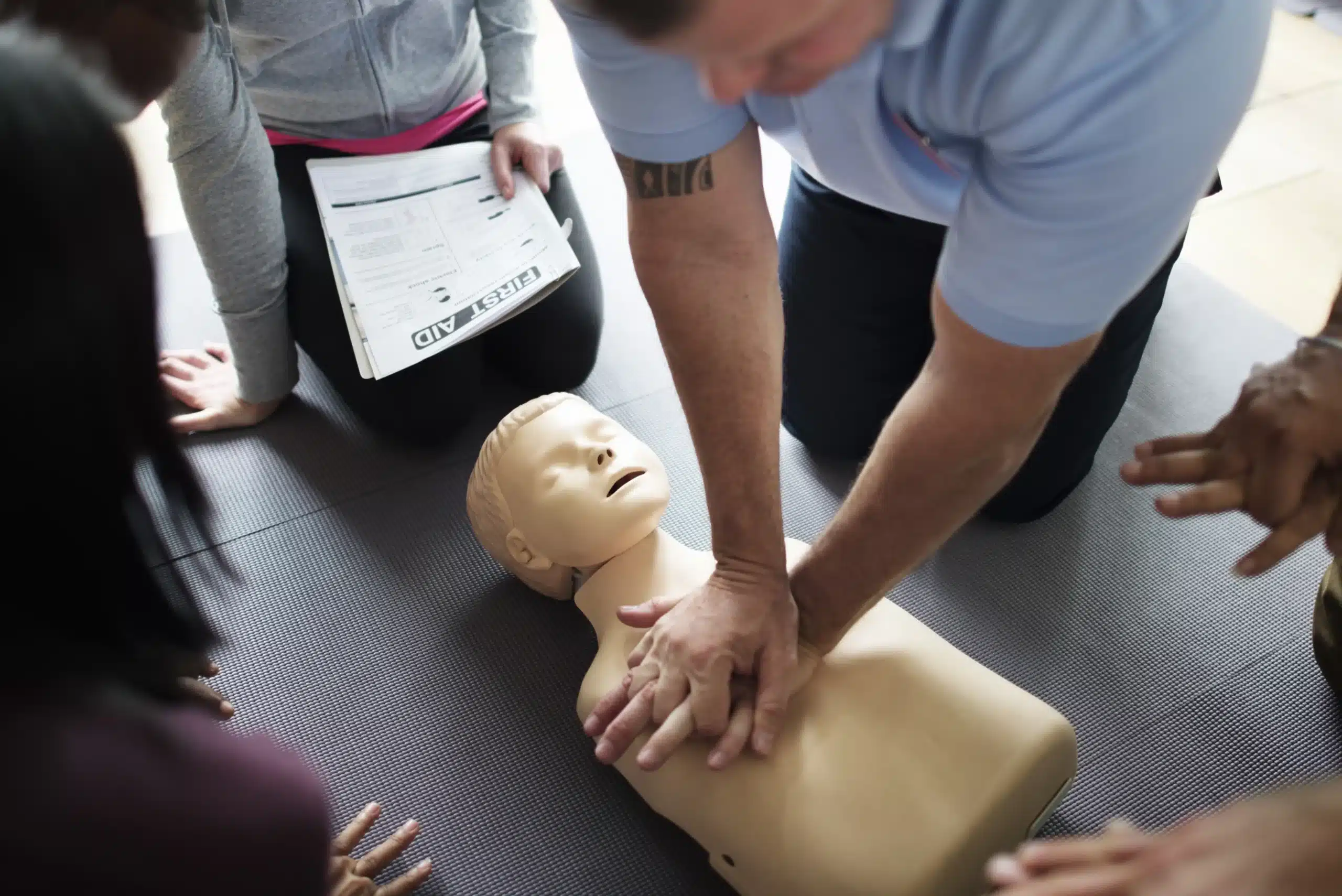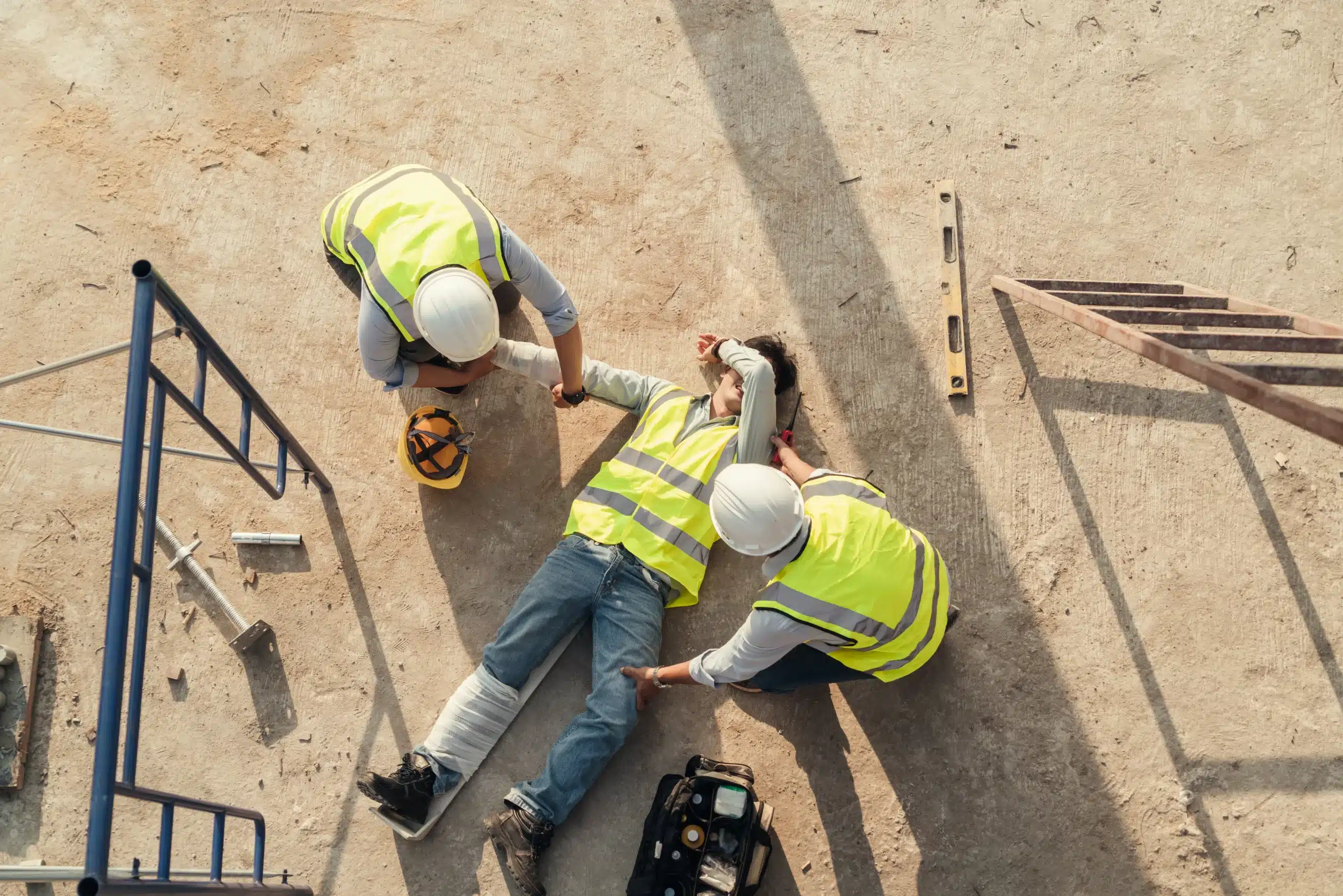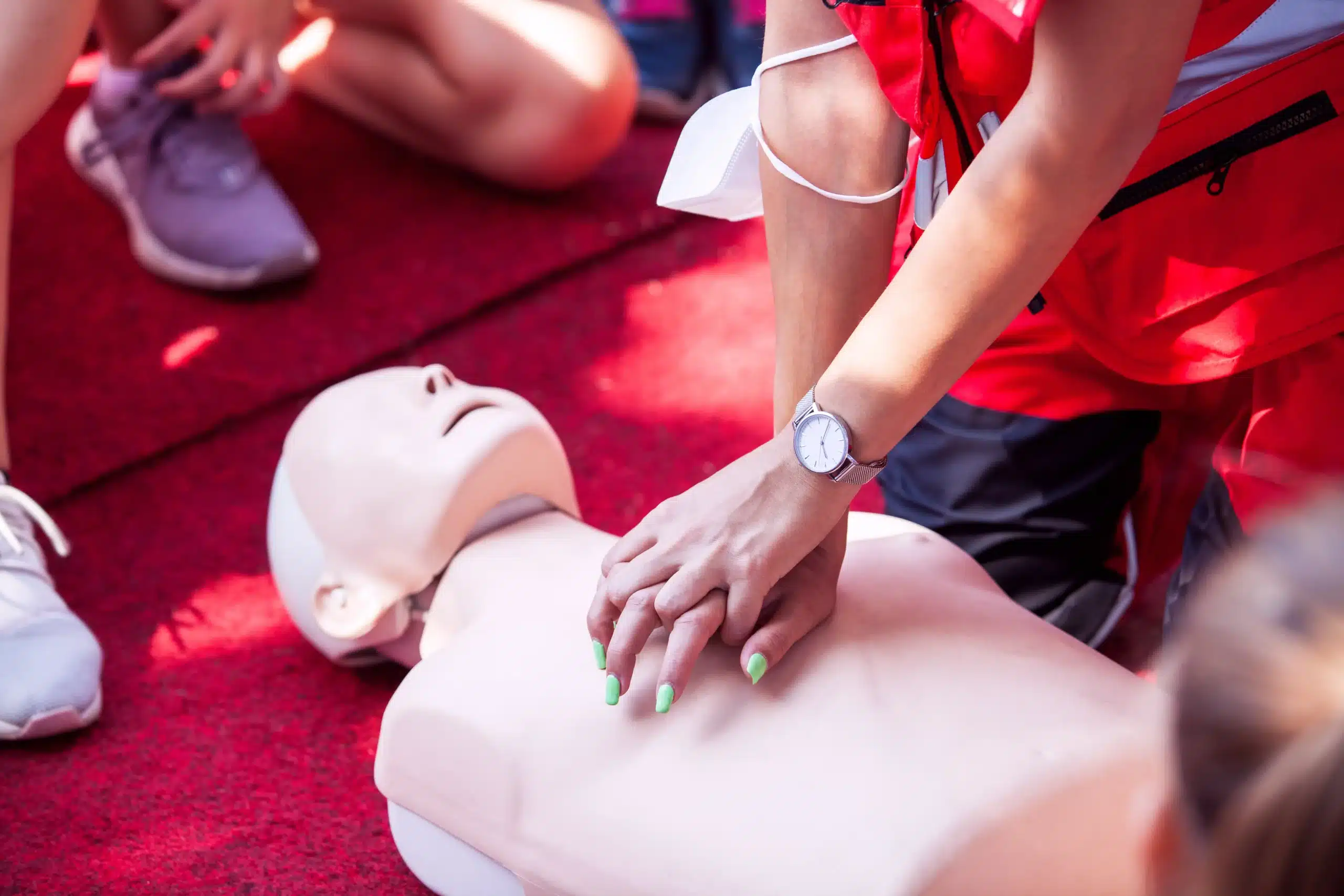Your BLS certification is more than just a piece of paper; it’s a testament to your commitment to providing high-quality care in critical situations. Maintaining this vital skill requires staying current with the latest guidelines and best practices. If you’re looking for “bls recertification near me,” this comprehensive guide will help you navigate the recertification process with ease. We’ll explore different course formats, discuss associated costs, and provide valuable tips for preparing for your recertification. We’ll also delve into the importance of staying updated on guideline changes and maintaining your skills long after you’ve received your new certification card.
Key Takeaways
- Regular BLS recertification ensures you’re equipped with the latest life-saving skills. Find a course format—online, in-person, or hybrid—that works for you and commit to staying current. This not only benefits your career but also empowers you to confidently handle medical emergencies.
- Choosing the right BLS recertification provider and course format is crucial. Research providers, compare costs, and read reviews to find a course that aligns with your learning style and budget. Consider factors like accreditation, instructor experience, and course content.
- Preparation is key to a smooth recertification process. Review current AHA guidelines, gather required materials, and familiarize yourself with the course format. Taking these steps will boost your confidence and set you up for success.
What is BLS Recertification & Why is it Important?
Knowing Basic Life Support (BLS) is crucial for responding to medical emergencies. It equips you with the skills to potentially save a life. But what exactly does BLS entail, and why is recertification so important? Let’s break it down.
What is BLS & Why Does it Matter?
BLS focuses on providing immediate care during life-threatening situations. This includes CPR, using an AED, and helping someone who is choking. These skills are essential for healthcare providers, first responders, and anyone who wants to be prepared for an emergency. BLS training covers the core techniques needed to stabilize and support patients until professional medical help arrives. It emphasizes early recognition and intervention, which can significantly impact a person’s chances of survival. For those looking to get certified, resources like the American Heart Association BLS course offer comprehensive training.
Why Recertify Regularly?
BLS certifications are typically valid for two years. Recertification isn’t just about maintaining a credential; it’s about staying up-to-date with the latest medical guidelines and best practices, which can change. Regular recertification ensures you’re always prepared to provide the most effective care. Plus, maintaining a current BLS certification is often a job requirement for many healthcare professionals and other roles. It demonstrates your commitment to patient safety and high-quality care. Resources like Heart Start CPR offer helpful information on BLS renewal and the importance of staying current. Regularly refreshing your skills helps you respond confidently and effectively in a crisis.
Find BLS Recertification Courses Near You
Your BLS certification is about to expire, and you’re searching for “bls recertification near me.” You want a course that fits your schedule, meets your budget, and provides high-quality training. Let’s explore how to find the perfect BLS recertification course in your area.
Local BLS Recertification Providers
Start by looking for local providers. Check with hospitals, community centers, and dedicated CPR training centers in your city. Many fire departments also offer BLS recertification courses. A quick online search can often uncover several options. Redwood City CPR Classes, for example, offers various American Heart Association courses, including BLS certification and recertification. Look for providers who offer group discounts if you’re training with colleagues.
Find Nearby Courses Online
Many organizations offer online BLS recertification courses. While online learning offers flexibility, in-person BLS recertification provides valuable hands-on learning and real-time feedback from instructors. Consider what learning style works best for you. If you prefer a blended approach, some providers offer hybrid BLS courses that combine online modules with in-person skills sessions.
Top BLS Recertification Providers
Several reputable organizations offer BLS recertification courses. Here are a few of the most well-known:
American Heart Association
The American Heart Association (AHA) is a leading provider of CPR and BLS training. Their BLS courses are widely recognized and accepted. You can often find local AHA training centers through their website.
Red Cross
The Red Cross also offers BLS renewal and recertification courses. They have a strong presence in many communities and provide a range of training options.
National CPR Foundation
The National CPR Foundation offers a variety of CPR and BLS courses, including online options.
ProTrainings
ProTrainings provides online BLS certification and recertification courses.
American CPR Care Association
The American CPR Care Association offers comprehensive BLS training and recertification courses, available both online and in-person.
Redwood City CPR Classes
Redwood City CPR Classes offers local BLS recertification courses tailored to healthcare professionals in Redwood City, Palo Alto, and Menlo Park. They also have a low-price guarantee.
Compare BLS Recertification Course Formats
Choosing the right BLS recertification course format depends on your learning style, schedule, and preferences. Let’s break down the pros and cons of in-person, online, and hybrid learning.
In-Person Courses: Pros & Cons
In-person BLS recertification courses offer hands-on learning, real-time feedback, and direct interaction with an instructor. You’ll practice skills and receive personalized guidance, which can be especially helpful for kinesthetic learners. This format also fosters camaraderie among participants, creating a supportive learning environment. However, in-person courses require a fixed schedule, which can be challenging for busy professionals with varying shifts. Finding a course that aligns with your availability is key. Redwood City CPR Classes offers a variety of course times to accommodate different schedules. For those in the Redwood City area, including Palo Alto and Menlo Park, in-person training offers a valuable opportunity for hands-on learning and networking.
Online Recertification: Flexibility & Convenience
Online BLS recertification courses provide ultimate flexibility, allowing you to learn at your own pace and on your own schedule. You can access course materials from anywhere with an internet connection, making it a convenient option for those with busy lives or limited access to transportation. Online courses often include interactive modules, videos, and practice quizzes to reinforce learning. However, self-discipline and motivation are essential for success in an online format. If you prefer a structured classroom setting, online learning might not be the ideal fit. ACLS Medical Training offers comprehensive online BLS recertification courses that can be a great option for those who prefer self-paced learning.
Hybrid Courses: Hands-On & Digital Learning
Hybrid courses combine the best of both worlds, offering a blend of online learning and in-person skills sessions. You can complete the theoretical components online at your convenience and then attend a hands-on session to practice essential skills with an instructor. This format offers flexibility while still providing the opportunity for real-time feedback and interaction. Hybrid courses can be a great option for those who want the convenience of online learning but also value the benefits of in-person instruction. This blended approach allows students to absorb information online and then apply it in a practical setting. Articles like this one from Science Times discuss the effectiveness of hybrid learning in various fields, including BLS recertification.
BLS Recertification Costs
Getting your BLS recertification is an investment in your skills and career. Understanding the costs involved helps you budget and find the best fit.
Typical Course Prices
BLS recertification course fees vary based on location, provider, and course format. Expect to pay around $55 for an American Heart Association (AHA) BLS recertification course, with textbook costs adding another $20–$25. Remember, these prices are averages, and your actual cost may differ. Always check with your chosen provider for their specific pricing. Redwood City CPR Classes offers a low-price guarantee, ensuring competitive rates for your BLS recertification.
Factors Affecting Course Costs
Several factors influence the final price. In-person courses often cost more due to facility overhead and instructor fees. Online courses tend to be more budget-friendly, eliminating these expenses. The type of certification also matters. BLS recertification for healthcare providers may have different pricing than general BLS recertification. Finally, your location plays a role, as prices can fluctuate regionally.
Save on Recertification
Looking to save? Several strategies can help. Explore online recertification options, often more affordable than in-person classes. Many providers, including Redwood City CPR Classes, offer group discounts, a cost-effective choice if you can coordinate with colleagues or friends. Ask about student discounts if applicable. Finally, keep an eye out for special offers or promotions.
What to Expect During BLS Recertification
So, you’re ready to renew your BLS certification—smart move. Staying current with your BLS skills is essential for providing high-quality care and ensuring patient safety. Here’s what you can expect during the recertification process:
Course Length & Time Commitment
BLS recertification courses typically require a time commitment of 2.5 to 4.5 hours. This timeframe allows adequate time to review essential concepts, practice vital skills, and build confidence in your abilities. While it might seem like a chunk of your day, remember that this refresher is crucial for maintaining your skills and providing effective care when it matters most. Check with your chosen provider, like Redwood City CPR Classes, for specific course durations.
Key Recertification Components
BLS certification is valid for two years. Renewal involves choosing a course format (online or in-person), completing the coursework, passing an exam, and receiving a new certification card. Some providers, such as Redwood City CPR Classes, offer group discounts, so be sure to ask! The recertification process is straightforward and designed to efficiently update your knowledge and skills. You’ll review core concepts like high-quality CPR for adults, children, and infants, along with techniques for using an AED and relieving choking.
Skills Assessment & Evaluation
Most BLS recertification courses include a skills assessment and evaluation. This hands-on portion allows you to demonstrate your proficiency in performing CPR and other life-saving techniques. Instructors provide feedback and guidance to help refine your skills and ensure you meet the required standards. Don’t forget to schedule your skills check promptly—missing this step can delay your recertification. For additional insights, this article offers helpful tips on avoiding common recertification pitfalls. This study00716-7/fulltext) highlights how valuable feedback is during training for improved performance, both immediately and in the long run.
Choose the Right BLS Recertification Provider
Picking the right BLS recertification provider is key to a smooth and valuable learning experience. Here’s what to consider:
Evaluate Course Quality & Accreditation
First, make sure the course aligns with current American Heart Association (AHA) guidelines. Check if the provider is accredited by a recognized organization. This ensures the course meets high standards and your certification will be widely accepted. For example, the ACLS Certification Institute offers courses accredited by the ADA, AMA, and ANCC. A clear outline of the course content should be readily available, so you know what to expect. Look for a provider that offers continuing education credits (CEUs) if those are important for your professional development.
Read Reviews & Testimonials
Before committing to a provider, see what other students say. Online reviews and testimonials offer valuable insights into the quality of instruction, course materials, and overall experience. A provider like Heart Start CPR, with many positive Google reviews, can give you confidence in your choice. Look for comments that mention the instructor’s teaching style, the clarity of the materials, and the staff’s helpfulness. This first-hand feedback can help you gauge whether the course is a good fit for you.
Instructor Qualifications & Experience
A great instructor can make all the difference. Look for providers with experienced, certified instructors who are passionate about teaching. Organizations like the American Red Cross often highlight their instructors’ credentials and rigorous training. This ensures you’re learning from qualified professionals. Consider whether the instructor’s background and experience align with your learning needs. For example, if you’re a healthcare provider, an instructor with a strong medical background might be beneficial.
Prepare for Your BLS Recertification
Getting ready for your BLS recertification doesn’t have to be stressful. With a little planning, you can walk into your recertification course feeling confident and prepared.
Refresh Your Knowledge
BLS guidelines are updated periodically to reflect the latest advancements in resuscitation science. Before your recertification course, take some time to review the most current American Heart Association guidelines. This will ensure you’re up to speed on any changes and ready for the recertification exam. Knowing the material ahead of time lets you focus on the practical skills portion of the course.
Required Materials & Equipment
One of the best parts about BLS recertification? Many courses offer all the required materials online, included with your purchase. This means you’ll have everything you need to prepare right at your fingertips. Check with your chosen provider—Redwood City CPR Classes includes all materials!—to confirm what’s included and if there’s anything you need to bring to the course. Some providers may require you to bring a pocket mask or other personal protective equipment.
Recertification Success Tips
Think about what helps you learn best. Do you thrive in a structured classroom, or do you prefer the flexibility of online learning? Choosing a course format that aligns with your learning style can make a big difference. Online recertification courses offer a convenient way to renew your BLS certification, fitting easily into your busy schedule. If you value hands-on learning, a hybrid course that combines online modules with in-person skills practice might be a better fit. Flexible training options like these can help you successfully balance your recertification requirements with your other commitments. Following the AHA BLS Renewal Dos and Don’ts will set you up for success. By focusing on these tips, you can streamline your preparation and feel fully equipped for your BLS recertification.
Maintain Your BLS Certification
Once you’re BLS certified, staying up-to-date is key. After all, guidelines and best practices can change, and regular practice keeps your skills fresh. This section covers how to maintain your certification and ensure you’re always ready to respond effectively.
Keep Your Skills Sharp
BLS covers a lot of ground, from CPR techniques to airway management. It also often includes specialized approaches for infants, children, and adults, so your training helps you provide appropriate care for people of all ages. To keep those skills sharp, consider incorporating them into your regular professional development. Look for opportunities to refresh your knowledge and practice key techniques. Even something as simple as reviewing the steps for adult, child, and infant CPR can make a big difference. You can find refresher courses through providers like Redwood City CPR Classes.
Common Recertification Challenges
One of the biggest challenges people face is finding the time for BLS recertification. Between busy schedules and long shifts, fitting in a course can be tough. Planning ahead and looking for flexible course options, like online or blended learning, can help. Another common mistake is not reviewing the course material before taking the recertification test. BLS guidelines can change, so brushing up on the latest information before your test is a good idea. This will help you avoid any surprises and feel confident on test day. Check with your recertification provider for updated materials or access to practice tests. The American Heart Association offers resources to help you prepare.
Stay Updated on Guideline Changes
Emergency care is always evolving. Staying updated on the latest BLS guidelines and requirements ensures you’re always providing the best possible care. Subscribe to newsletters, follow relevant organizations online, and check in with your certifying body for updates. Staying informed not only helps you maintain your certification but also allows you to adapt to new research and best practices in emergency care. This commitment to ongoing learning benefits both you and those you care for. Consider following industry leaders like the Red Cross for the latest information.
Related Articles
- BLS Renewal in Menlo Park: Your Easy Guide – Redwood City CPR Classes
- BLS Classes in Redwood City: Your Complete Guide – Redwood City CPR Classes
- Basic Life Support (BLS) in Menlo Park: Complete Guide
- BLS HeartCode Redwood City: A Complete Guide
- BLS Certification in Palo Alto: A Complete Guide
Frequently Asked Questions
How often do I need to renew my BLS certification? BLS certification is typically valid for two years. It’s recommended that you recertify before your current certification expires to maintain your skills and ensure you’re up-to-date on the latest guidelines.
What’s the difference between BLS certification and recertification? Initial BLS certification involves completing the full course and passing the exam. Recertification is for those who already hold a BLS certification and need to renew it. Recertification courses are often shorter and focus on refreshing your knowledge and skills.
What if my BLS certification has already expired? If your certification has lapsed, you’ll likely need to take the full BLS certification course again rather than a recertification course. Check with your certifying organization or training provider for their specific requirements.
Are online BLS recertification courses accepted? Yes, many organizations accept online BLS recertification courses. However, it’s essential to choose a course from a reputable provider accredited by a recognized organization like the American Heart Association or the Red Cross. Always confirm with your employer or licensing board to ensure they accept online recertification.
How can I find BLS recertification courses near me? Search online for “BLS recertification near me” to find local providers. Check with hospitals, community centers, and dedicated CPR training centers in your area. You can also contact the American Heart Association or the Red Cross to locate certified training centers in your region.
